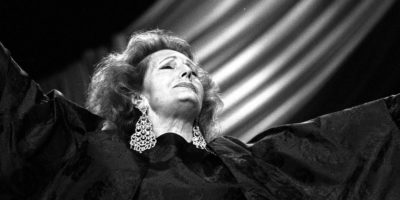
Sultan Gazi Murad Han Hüdavendigâr by Osmanlı98 – Wikimedia Commons
Top 10 Interesting Facts about Murad I
Murad I was born on 29th June 1326. He was the Ottoman Sultan from 1326 to 1389. He was the child of Nilüfer Hatun and Orhan Gazi. After the passing of his older brother Süleyman Pasha, Murad I succeeded to the throne.
Murad I conquered Adrianople, changed its name to Edirne, and proclaimed it the new Ottoman Sultanate capital in 1363. By bringing most of the Balkans under the Ottoman realm, he further expanded the Ottoman realm in Southern Europe.
He forced the princes of Serbia and Bulgaria as well as the East Roman emperor John V Palaiologos to pay him tribute. Murad I administratively separated his sultanate into the two provinces of Anatolia (Asia Minor) and Rumelia (the Balkans).
At the end of the battle of Kosovo, Sultan Murad was stabbed and martyred by the wounded Serbian knight Milos Oblic, who wanted to meet him in person. Now let’s look at some interesting facts about Murad I.
1. Murad I Was Referred to By Many Titles
“Hodawendgar” and “Gazi Hünkar” were terms used to refer to Sultan Murad. Hodawendgar is a Persian word that means chief or master, and Ghazi Hünkar is a Turkish word that implies veteran ruler.
The vilayet (province), the center of which was Bursa, was called Hodawendgar to honor his memory until the end of the Ottoman Empire. Murad I was known by several titles, including Bey, Emîr-i a’zam (Great Emir), Khan, Padishah, Sultânü’s-selâtîn (Sultan of sultans), and Melikü’l-mülûk, according to Ottoman sources (Malik of maliks).
He was referred to as Tsar in Serbian and Bulgarian sources. He was referred to as dominus armiratorum Turchie in a Genoese document (Master lord of Turks).
2. Son of Nilüfer Hatun and Orhan Ghazi

Sultan Orḫan Gazi Han by Osmanlı98 – Wikimedia Commons
Murad I was born on 29th June 1326. The father of Sultan Murad I was Orhan Ghazi. Nilüfer Hatun, who had been known as Holofira before converting to Islam, was the mother of Sultan Murad I.
She was the Byzantine Governor of Yarhisar’s daughter. In the Ottoman Empire, a skilled statesman known as “Lala” trained each shahzade (prince). Lala Şahin Pasha was Murad I’s tutor.
At an early age, Sultan Murad was appointed the sanjak bey of Bursa, which gave him valuable experience. In the Ottoman Empire, the term “sanjak bey” was used to refer to a bey appointed to the military and administrative command of a district.
3. Became the Heir to The Throne After His Brother Died

Royal Crown by Ruth Archer from Pixabay
He was named heir to the throne in 1359 when his older brother Süleyman Pasha died in a hunting accident. This year, he was the commander of the army in Rumelia. He took the throne as his father’s successor after he passed away the following year.
4. Suppressed the First Shahzade Revolts in Ottoman History
His two brothers, Ibrahim and Halil, rebelled against Sultan Murad I. This was because, according to ancient Turkish tradition, political power was regarded as the dynasty’s common property. As a result, Murad put an end to the first shahzade uprisings in Ottoman history.
Shahzade Bayezid, the son of Murad, married Devlet Hatun, the princess of the beylik of Germiyanids, in 1378. The bride gave the Ottomans the cities of Kütahya, Tavşanli, Emet, and Simav as dowry. In 1385, Shahzade Savcı Bey rebelled against his father in Bursa. On the Kete plain, he was defeated, taken prisoner, and executed.
5. Tolerated Islamic Religion
The Christian world was worried about the Ottoman Empire’s progress, which the Byzantine Empire was powerless to stop. The Serbians and Bulgarians did not appear to be able to resist it either. Venice’s interests in trade with the East were at stake if it started a conflict with the Ottomans.
The Hungarians, who desired to convert the Balkan people to Catholicism, would be the only force able to oppose them. In 1364, a reconnaissance force led by Ottoman commander Hac Ilbeyi annihilated the army assembled by the kings of Hungary and Serbia.
The army constituted as well as the prince of Bosnia and Wallachia, with the support of Pope Urban V, the leader of the Catholic Church. The orthodox Rumelian people welcomed the Ottomans. In the face of the Catholic threat, it was natural for the Orthodox people to prefer the Ottomans.
He ordered the construction of three mosques, an imaret, a madrassa, a thermal spring, and an inn in Bursa. He as well commissioned an imaret (a soup kitchen for the poor) and tekke (lodge) in Yenişehir.
6. Many Wives and Children
His first wife, Gülçiçek Hatun, was Candarolu Süleyman Bey’s daughter. Some sources claim that she was of Greek ancestry. Political considerations led him to marry Tamara, the sister of the Bulgarian King Ivan Shisman. He as well married Maria, a Byzantine Emperor and a Bulgarian Prince of Kyustendil’s daughter.
Sultan Bayezid I, Yahşi Bey, Yakub Bey, Savc Bey, and Ibrahim Bey were his five sons. He also had four daughters, two of whom were married to Karamanid kings and one of them was to a Sarukhanid king.
7. Established the Former Osmanli Tribe into A Sultanate
By establishing a society and an administration in the newly conquered city of Adrianople, Murad I established the sultanate (Edirne in Turkish). He expanded the realm in Europe, bringing most of the Balkans under Ottoman rule and forcing the Byzantine emperor to pay him tribute.
The former Osmanli tribe was established into a sultanate by Murad. In 1363, he established the devşirme recruiting system, the janissary corps, and the title of sultan. He also established the two provinces of Anadolu (Anatolia) and Rumeli (Europe).
8. Murad I Participated in Many Wars

Murad has his first-born son “Saulex” blinded by en:Paul Rycaut – Wikimedia Commons
Murad fought in Europe against the Serbs, Albanians, Bulgarians, and Hungarians as well as against the powerful beylik of Karaman in Anatolia. In particular, a Serb expedition to expel the Turks from Adrianople led by the Serbian brothers’ King Vukašin and Despot Uglješa, was defeated on September 26, 1371.
This was done by Murad’s capable second lieutenant Lala Şâhin Paşa, the first governor (beylerbey) of Rumeli. Sofia was conquered by the Ottoman Empire in 1385. At the Battle of Pločnik in 1386, Prince Lazar Hrebeljanović beat an Ottoman army.
9. Assassinated by Serbian Nobleman and Knight Miloš Obilić

Murad I by Yuotka – Wikimedia Commons
The Battle of Kosovo in 1389 saw Murad’s army triumph over Lazar’s Serbian Army and its allies. About when and how Murad I was killed, several accounts from various sources exist. The contemporary sources mainly noted that the battle took place and that both Prince Lazar and the Sultan lost their lives in the battle.
One story claim that Milos Obilic, a wounded Serbian knight who wished to meet Sultan Murad in person, stabbed and martyred him after the fight. Another claim is that during the first hours of the battle, Murad I was assassinated by Serbian nobleman and knight Miloš Obilić by knife.
Murad I’s (and Jakub Bey’s) assassination was detailed in a letter from the Florentine Senate to King Tvrtko I of Bosnia. This letter was dated October 20, 1389, and authored by Coluccio Salutati.
Twelve Serbian lords cut past the Ottoman defenses of Murad I. One of them, supposedly Obilić, was able to enter the Sultan’s tent and stab him in the throat and the belly with a sword.
10. Sultan Murad I Remains Were Carried to Bursa
Murad’s internal organs were buried in Kosovo Field and are still there today at a location called Meshed-i Hudavendigar. The place has come to hold religious importance for the Muslim residents of the area.
It was recently rebuilt after being vandalized between 1999 and 2006. His other remains were moved to Bursa, his Anatolian capital city, and buried in a tomb at the complex built in his name.
Planning a trip to Paris ? Get ready !
These are Amazon’s best-selling travel products that you may need for coming to Paris.
Bookstore
- The best travel book : Rick Steves – Paris 2023 – Learn more here
- Fodor’s Paris 2024 – Learn more here
Travel Gear
- Venture Pal Lightweight Backpack – Learn more here
- Samsonite Winfield 2 28″ Luggage – Learn more here
- Swig Savvy’s Stainless Steel Insulated Water Bottle – Learn more here
Check Amazon’s best-seller list for the most popular travel accessories. We sometimes read this list just to find out what new travel products people are buying.








